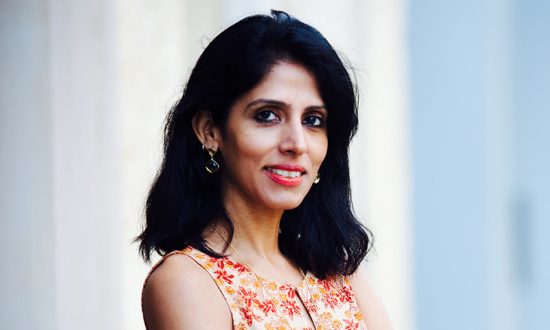Simrita Dhillon is the founding partner of SANDA, a leading Go-to-Market entry firm, advising US Fashion & Beauty Brands on entering the Indian Market. She is responsible for Repping, Drew Barrymore’s Flower Beauty in India. With over 20 years of experience in fashion, beauty, luxury retail & international market entry, Simrita opened the first ERMENEGILDO ZEGNA store in India in December 1999 and the first HUGO BOSS store in India in June 2003 in New Delhi. She is India’s first luxury goods manager pioneering International Luxury Brands entering India.
India is one of the fastest-growing markets for direct-to-consumer (D2C) luxury beauty brands. The Indian Beauty and Personal Care market is currently valued at $7.3 billion and it is projected to reach $18.5 billion by 2022 growing at a CAGR of 12.6% from 2018 to 2022. In the premium segment, it is projected to grow at a CAGR of 13.6%. Global Direct to Consumer (D2C) brands have been successful in India. In order to win, a brand must consider the following attributes, figures and the tried and tested strategies that helped domestic brands make a mark in the Indian subcontinent.
India’s beauty and personal care market is expected to be $28 billion by 2025, growing at an 8.1% CAGR, as stated by Avendus.
Adapting a Direct-to-Millennial approach
Globally, millennials, or Gen Y, account for roughly 23% of the world population, or 1.8 billion people. But, the millennial population in India accounts for 34% (440 million) of the country’s total population. Over the past few years, India has become the world’s largest millennial market, attracting attention from around the globe. Contrary to other countries, millennials in India are among the main breadwinners in their households. With the median age being between 28 millennials enjoy the buying process and often make their buying decisions on the web.
Larger Market in Tier 2 and 3 cities
Targeting Tier 2 and 3 markets – During the pandemic, My Glamm increased its offline presence from 500 to 10,000 POS in Tier-2,3 markets.
This market offers a well-paved ground by Indian businesses at the moment. People have the purchasing power and access to digital and physical stores. Technical literacy and the aspiration quotient among shoppers to explore newer brands across the digital landscape has become congruous with the Tier 1 cities.
Real estate costs are lower in Tier 2 and 3 cities and thus, retail infrastructure has the possibility of achieving a break-even on investment much faster.
Educating people about the products, as per their brand personality
As amenable as Indian shoppers are to try out a new product, they would still want to get educated from the right expert about their buying option. Brands that have worked with the most influential figures in the past have realised that people relate more with those who they view regularly. Especially those who share similar lifestyles as their own.
Mama earth collabs with mom bloggers on social media platforms to pitch to the right audience. MamaEarth has constantly worked with crowdsourced content around the mother’s sentiment in India to establish their own brand as a nurturing archetype.
The Mom bloggers have educated their niche audience with how the MamaEarth products are safe to use on their kids and that has created a huge impact among Indian mothers to opt the safer option.
For Early- Stage DTC brands:
Running Pre-order campaigns and Waitlist – They are cheap, easy to get the word out, and you reach the audience where they are.
Offer the option to buy the products from your company before launch or let people sign up and get a notification when the product is launched.
The underlying notion of this approach is to get the maximum outreach in a very little amount of time. Which is a great way to establish a brand presence in India given that the country has the world’s second-largest internet population at over 825.30 million at the end of March 2021.
As a global brand prepares for a grand launch, the waitlist and pre-order campaign data help them analyse their target market even better.
Incentivize referral purchases:
Indian consumers make the best use of referral bonuses as it is a human tendency to discuss both good and bad and give recommendations. As per a Nielsen Study, about 92% of the customers trust recommendations that were made by someone closer to them. In the opportunity of incentivizing the referee and the referral, it only makes for more customer data and sorts out lookalike audiences of the target audiences. Doubling the original target outreach.
For Growth Stage DTC brands:
Engage social dialogue by standing up for a social cause – Nykaa celebrated women’s beauty inside-out by their “#WhatMakesYouBeautiful ft Laxmi Agarwal” campaign in light of promoting the idea that nuanced beauty standards set by society are not the index of someone’s true beauty. The campaign garnered appreciation and outreach on social media. It largely owes to the power of content and partially owes to the fact that India’s social media penetration as per the latest reports stands at 518 million users.
Advertise on Podcast: India is the third-largest consumer with 57.6 million monthly listeners of podcasts as per PwC’s Global Entertainment & Media Outlook 2020 report. The response rate on some promoted products and services on podcasts is really huge and the investment is set mostly on time and content production. It acts as a unique touchpoint for the brand and helps you establish a perception of niche experts – Be it addressing consumer problems related to skincare and beauty, or curating beauty myths across the internet.
It’s a truly exciting time to be a beauty consumer in India. A growing middle class, a growing economy and a growing appetite for all things beauty-related make India a truly exciting market to watch.


